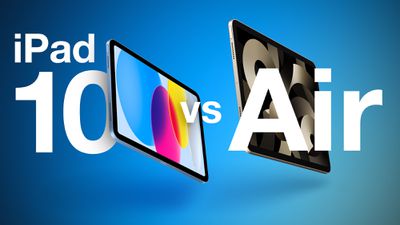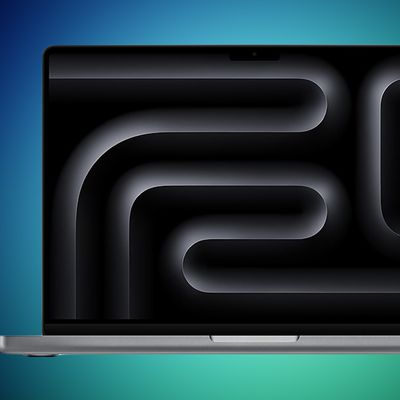With the same design, display size, camera systems, and more, the entry-level iPad is now a formidable rival to the iPad Air at a markedly lower $349 price point. With $250 between these two iPad lines, how different are they and which should you buy?

Upon the discontinuation of the ninth-generation iPad, Apple dropped the price of the 10th-generation iPad from $449 to $349. This means that the 10th-generation iPad is now $250 less than the $599 starting price of the iPad Air that Apple just released.
The 10th-generation model completes the transformation of the iPad product lineup toward a flat look with squared-off edges, no home button, and an all-screen design with curved corners. With the exact same display size and identical features like a Touch ID top button, USB-C port, and 5G connectivity, many prospective customers may now be considering a purchase of the standard iPad instead of the iPad Air – but there are more differences between the devices than immediately meets the eye.
The M2 chip and double the amount of memory make the iPad Air much more powerful than the 10th-generation iPad. Combined with a more advanced display in two size options, support for Apple Pencil hover and the Apple Pencil Pro, a thinner and lighter design, and even a different selection of color options, many users still have good reasons to prefer the iPad Air.
So should you consider buying the 10th-generation iPad to save money, or do you need the iPad Air instead? This breakdown serves as a clear way to see all the differences between the two devices.
| iPad (10th Generation, 2022) | iPad Air (Sixth Generation, 2024) |
|---|---|
| 10.9-inch display | 11- or 13-inch display |
| sRGB color | P3 wide color |
| Fully laminated display | |
| Anti-reflective coating | |
| A14 Bionic chip | M2 chip |
| 6-core CPU | 8-core CPU |
| 4-core GPU | 9-core GPU |
| Media Engine Hardware-accelerated H.264 and HEVC Video decode engine Video encode engine |
|
| 4GB memory | 8GB memory |
| Smart HDR 3 for photos | Smart HDR 4 for photos |
| Wi‑Fi 6 connectivity | Wi‑Fi 6E connectivity |
| Apple Pencil hover | |
| Supports Apple Pencil (USB‑C) and Apple Pencil (first generation) | Supports Apple Pencil (USB‑C) and Apple Pencil Pro |
| Supports Magic Keyboard Folio | Supports Magic Keyboard |
| 7mm depth | 6.1mm depth |
| Starts at $349 | Starts at $599 |
| 477 gram weight | 462 gram or 617 gram weight |
| Available in Silver, Pink, Blue, and Yellow | Available in Space Gray, Starlight, Blue, and Purple |
| 64GB or 256GB storage | 128GB, 256GB, 512GB, or 1TB storage |
| Starts at $349 | Starts at $599 |
A key difference between the devices is their chips and amount of memory, so if you plan on using your iPad for more demanding tasks like 3D graphic design, advanced photo editing, and gaming, the iPad Air will be the better choice by far. The M2 chip's dedicated media engine is also be particularly helpful when video editing, and supports Stage Manager, Apple's multitasking system for the iPad.
The 10th-generation iPad's display lacks P3 wide color, full lamination, and an anti-reflective coating. While these aspects are unlikely to be major reasons to preference the iPad Air, they are worth bearing in mind when trying to justify the $250 leap to the more expensive device. The iPad Air is also available in an all-new 13-inch size option, which is more suitable for multitasking and using the device as a laptop-replacement, but this pushes the price difference up to $450 – more than the cost of the 10th-generation iPad itself.
The iPad Air is marginally thinner and lighter, with differences that are so minor as to be unimportant to most customers, but the more muted tones of its color options may make it more or less appealing based on your personal preferences.
Apple Pencil support is also a key consideration. While the 10th-generation iPad supports the first-generation Apple Pencil, the Apple Pencil with USB-C is a better choice due to easier charging. However, this lacks advanced features like pressure sensitivity, haptic feedback, and barrel roll that you get with the iPad Air's Apple Pencil Pro support. People who plan to use the Apple Pencil heavily for tasks like note-taking and illustration will undoubtedly have a significantly better experience with the iPad Air, which supports both the Apple Pencil with USB-C and the Apple Pencil Pro.
While both devices support external keyboards, they have different strengths. The 10th-generation iPad's Magic Keyboard Folio will be better for table-typers, those who prefer function keys, and those who want to easily detatch the keyboard but keep the iPad propped up on a surface, while the iPad Air's Magic Keyboard is better for lap-typers and those who want backlighting.
In theory, the iPad Air is a more compelling overall package with the M2 chip, 4GB of additional memory, a dedicated media engine, Stage Manager for multitasking, a better display, and a much better Apple Pencil experience, but in practice, users with basic requirements are unlikely to notice a massive amount of difference between the devices. Unless you have specific need for the iPad Air's added features or its larger display size option, it may be worth saving the $250 and buying the 10th-generation iPad.



















